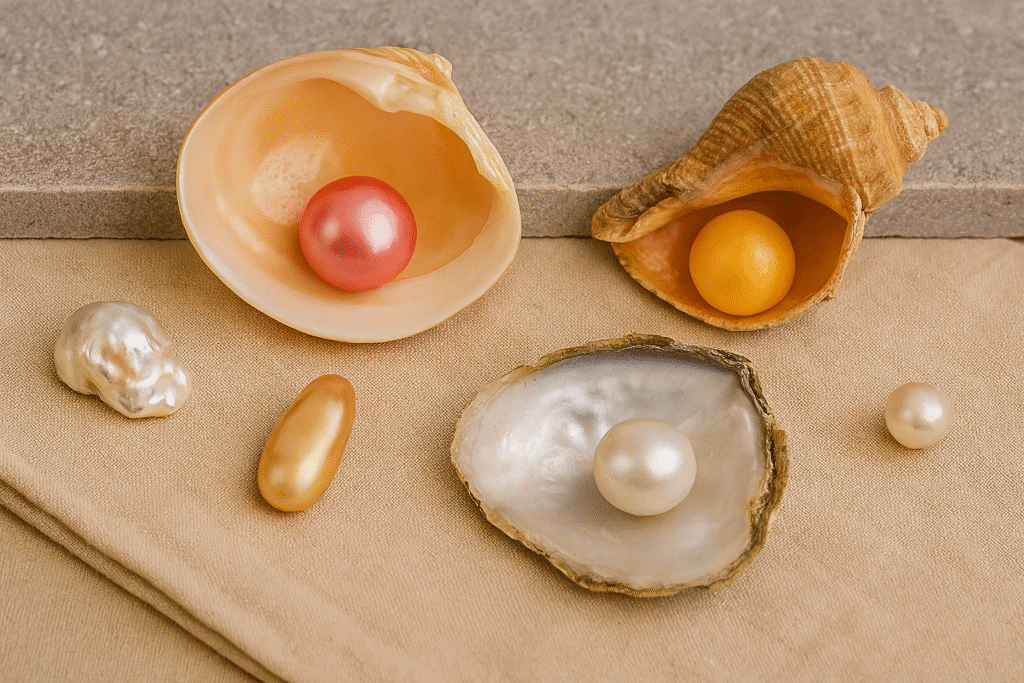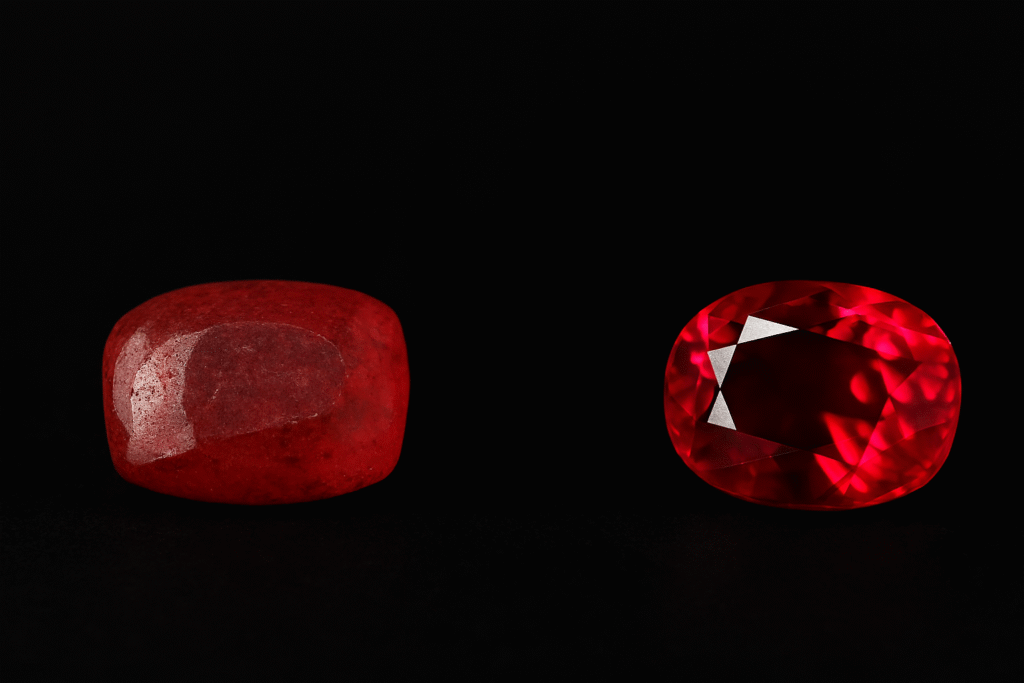Most people think pearls only come from oysters. The truth is different.
Natural pearls can form in many mollusks. Some of the rarest gems in the world are non-nacreous pearls from conch, melo melo, clam, scallop, and abalone.
Knowing about these pearls helps you see beyond the oyster and understand the full story of nature’s creations.
Conch Pearls
- Produced by the Queen Conch in the Caribbean
- Non-nacreous, with no mirror-like luster
- Famous for pink tones and flame-like patterns
- Rare and valuable in jewelry and collections
Melo Melo Pearls
- Found in the Melo marine snail of Southeast Asia
- Show orange to brown colors with a porcelain texture
- Large sizes are possible, which increases demand at auctions
- Highly sought after among collectors of rare natural pearls
Abalone Pearls
- Produced by abalone, mostly in cold Pacific waters
- Iridescent with blue, green, and purple colors
- Each pearl has a unique play of color not seen in oyster pearls
Clam Pearls
- Form inside giant clams in the South Pacific
- Typically creamy or white in color
- Rare natural pearls that often stay in private hands
Scallop Pearls
- Extremely rare, found in scallops from the Americas
- Can display deep purple shades
- Almost unknown outside gem circles
Why It Matters
If you only think of oyster pearls, you miss the bigger picture.
- Collectors chase rare natural pearls for their uniqueness
- Jewelers prize their unusual colors and origins
- Knowledge of these pearls helps you tell natural from cultured
- When you buy jewelry, this awareness gives you an edge
Would you recognize a pink conch pearl or an orange melo pearl if you saw one? Most people would not. That’s why understanding pearls beyond oysters sets you apart.
The world of pearls is wider than most imagine. From Caribbean conch to Southeast Asian melo, from abalone to scallops, each mollusk creates a gem with its own story.
Pearls are not limited to oysters. Conch pearls, melo melo pearls, abalone, clam, and scallop pearls each bring unique colors and textures. These non-nacreous natural pearls are rare and valuable, making them prized by collectors and jewelers. Learning about pearls beyond oysters helps you recognize and appreciate gems that many people overlook.



